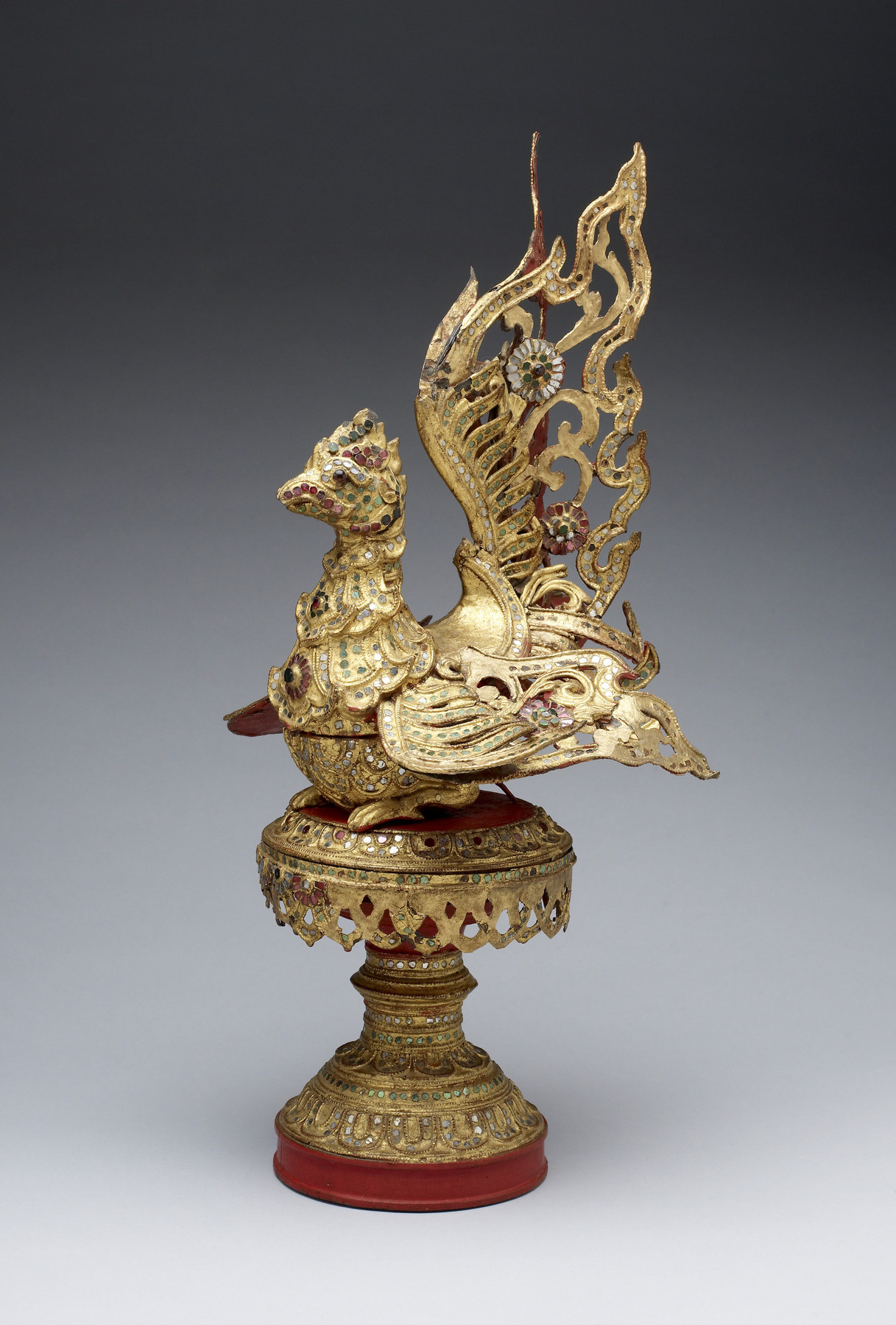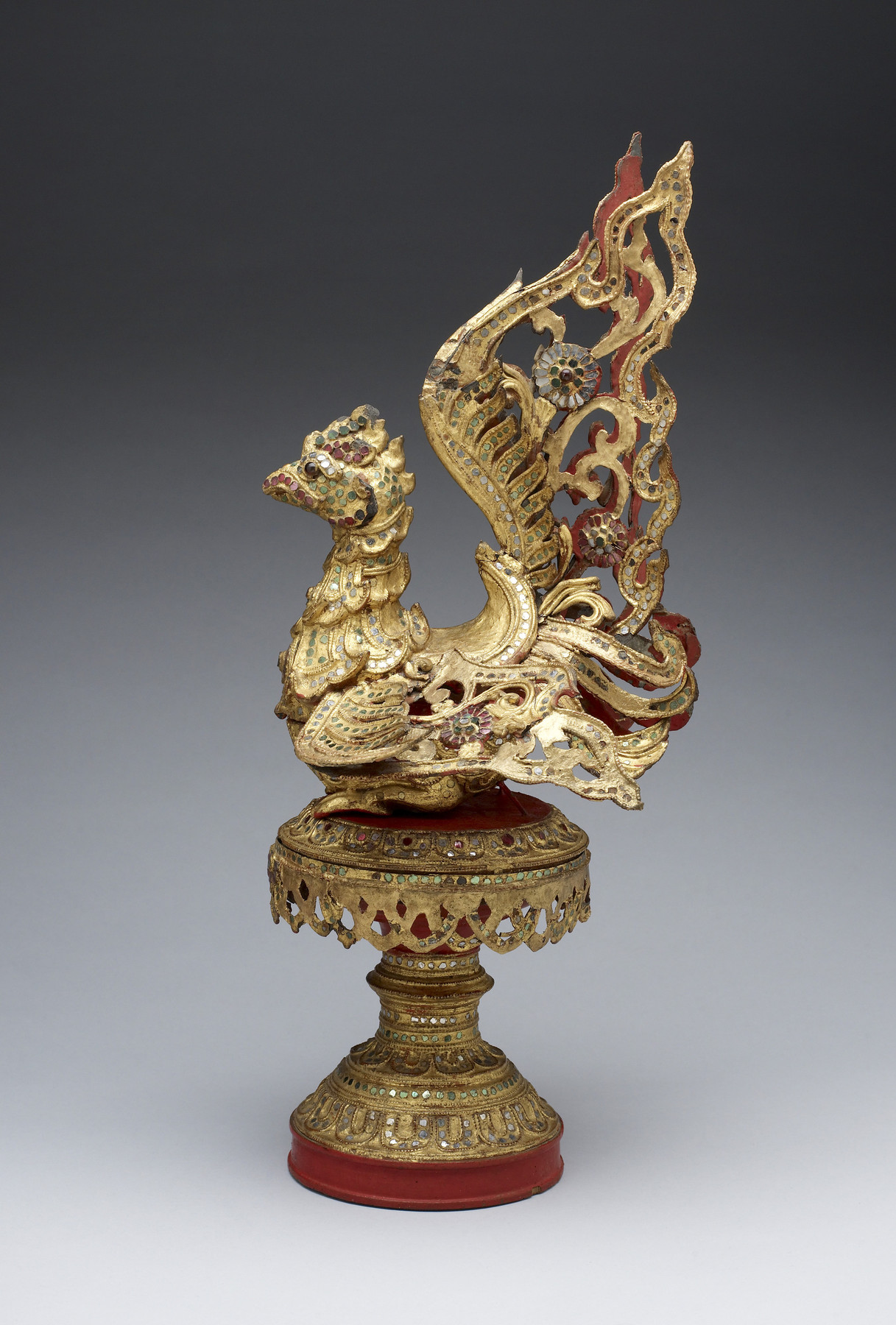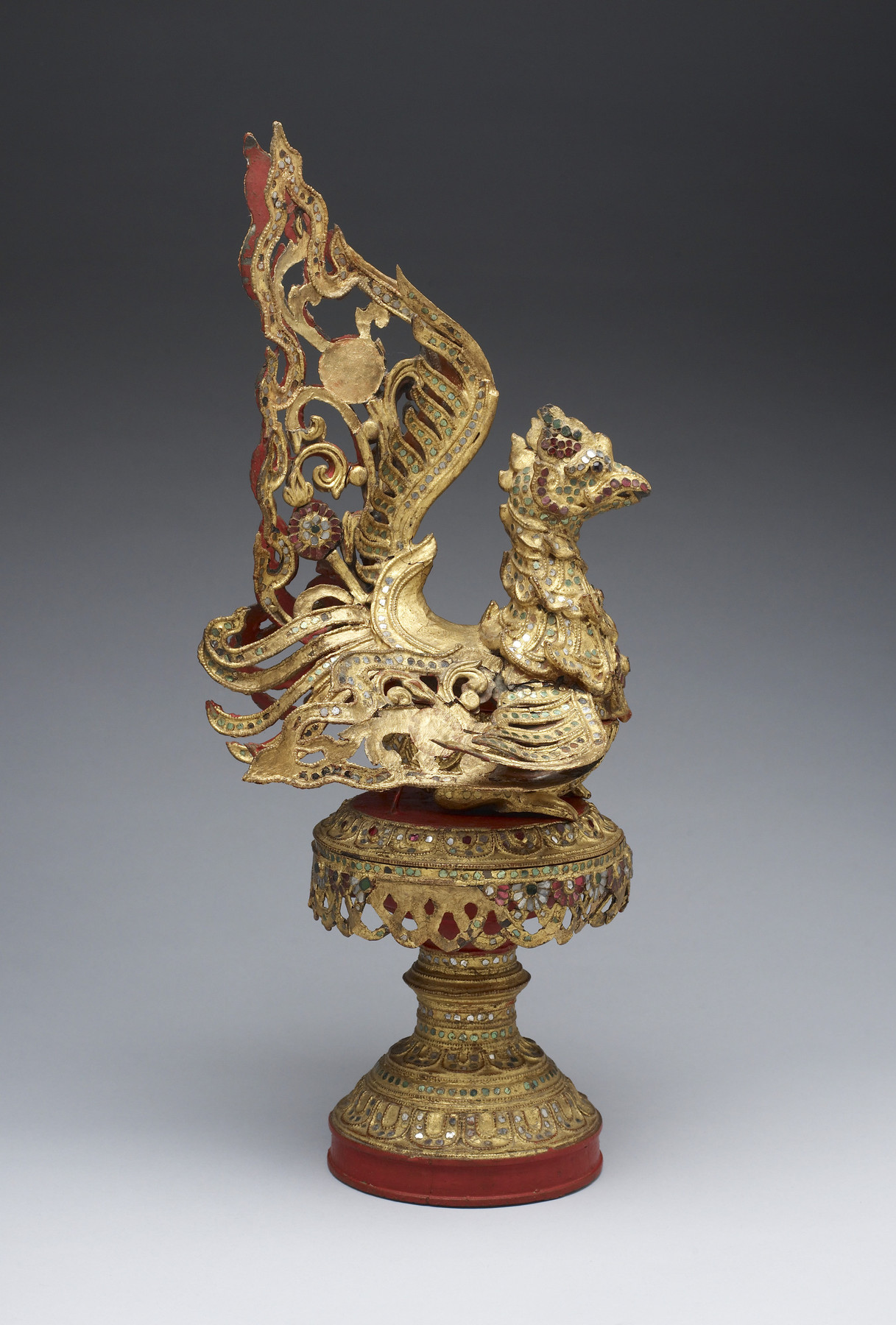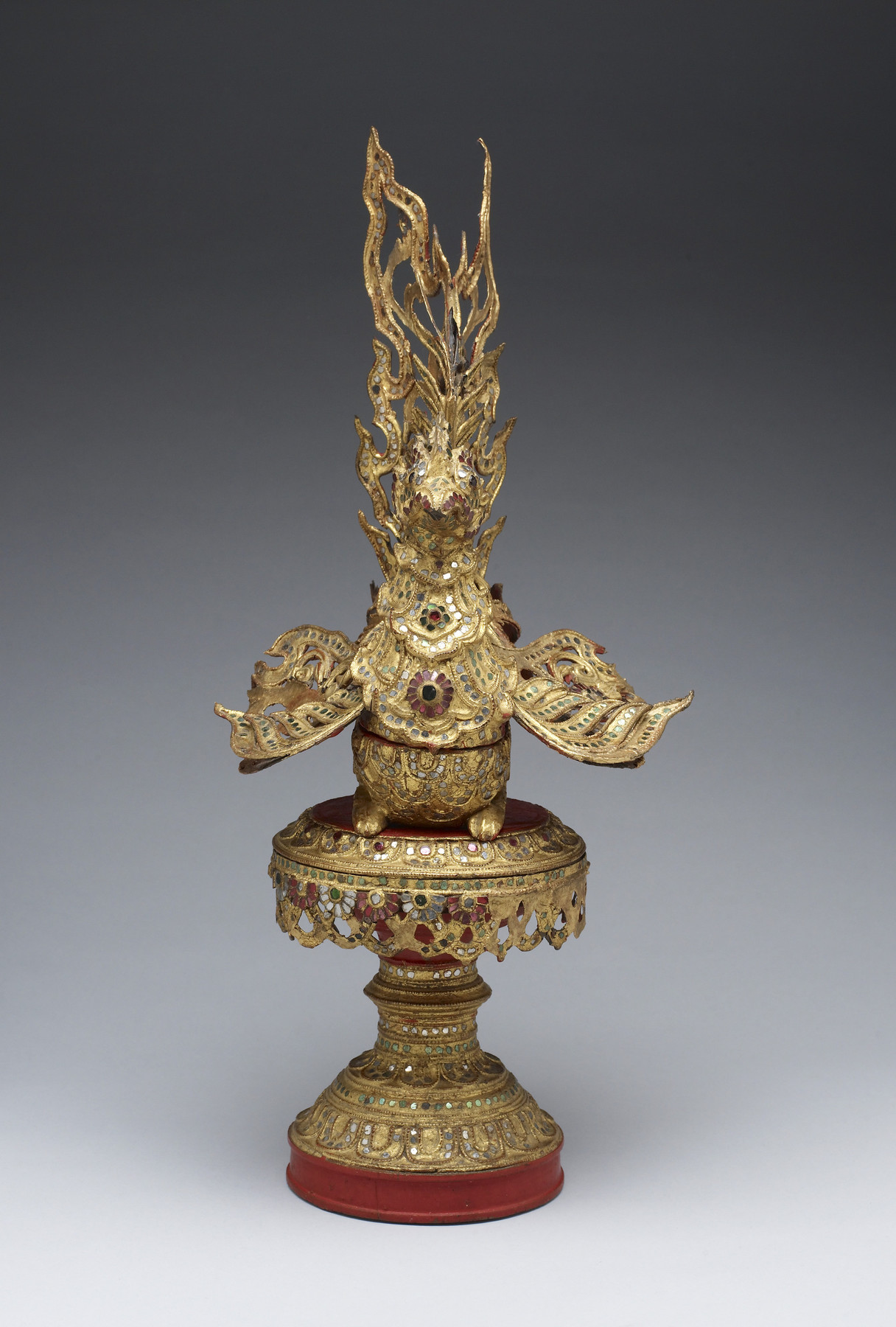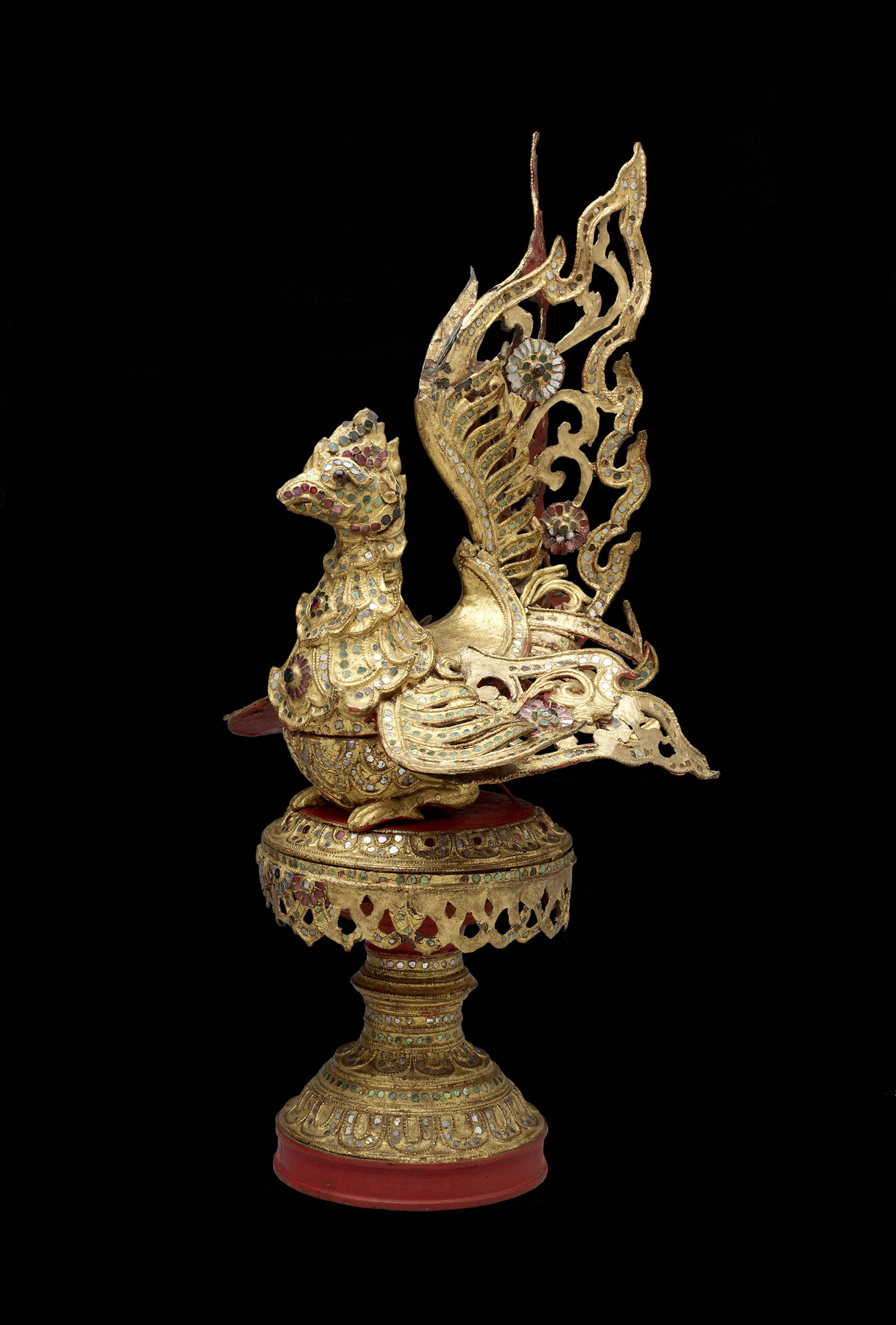Bird Offering Container
(Southeast Asia )
Donations to temples are believed to confer merit not only on the donor but also on all living beings. For this reason, altars are filled with gifts, such as food, flowers, and incense, that have been donated by devotees. Beautifully crafted vessels like this one, with its image of a semi-divine bird known as a "hamsa," were given to hold these items.
Provenance
Provenance (from the French provenir, 'to come from/forth') is the chronology of the ownership, custody, or location of a historical object. Learn more about provenance at the Walters.
Doris Duke Charitable Foundation's Southeast Asian Art Collection; given to Walters Art Museum, 2002.
Conservation
| Date | Description | Narrative |
|---|---|---|
| 11/29/2016 | Treatment | Stabilized for exhibit |
| 11/29/2016 | Treatment | The offering dish was extensively treated to stabilize flaking pigmented lacquer in 2011-12. The Southeast Asian thitsi lacquer surface decoration continued to flake in four small areas under the wings, which are made of tinned sheet iron. The flaking was consolidated with an acrylic adhesive. |
Geographies
Myanmar (Place of Origin)
Measurements
Overall H: 19 1/2 × W: 8 1/16 × D: 8 1/8 in. (49.5 × 20.5 × 20.7 cm); Base H: 2 15/16 × 6 in. (7.5 × 15.3 cm); Lid H: 115/8 × 8 1/16 × 8 1/8 in. (29.5 × 20.5 × 20.7 cm); Bottom of Bird H: 2 1/8 × 2 7/8 × 4 3/4 in. (5.4 × 7.3 × 12.1 cm).
Credit Line
Gift from Doris Duke Charitable Foundation's Southeast Asian Art Collection, 2002
Accession Number
In libraries, galleries, museums, and archives, an accession number is a unique identifier assigned to each object in the collection.
In libraries, galleries, museums, and archives, an accession number is a unique identifier assigned to each object in the collection.
61.344

